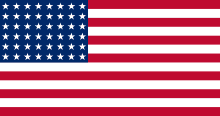Underground Boring
Underground Boring: A Versatile Utility Infrastructure Installation Technique
Definition: Underground boring, also known as horizontal directional drilling (HDD) or trenchless technology, is a method used to install various utility lines beneath the ground surface without the need for disruptive trench excavation. It involves drilling a pilot hole horizontally underground and then pulling the utility lines through the drilled pathway.
Applications in Various Industries:
1. Electrical Industry:
- Urban Areas: Installing power lines beneath roads, sidewalks, and buildings without disrupting traffic or causing damage to existing infrastructure.
- Suburban Developments: Providing electricity to newly developed residential areas while minimizing disruption to landscaping and property.
- Industrial Sites: Connecting power grids across large industrial complexes where traditional excavation may not be feasible due to space constraints.
2. Telecommunication Industry (FTTB, FTTCS, FTTH, FTTT):
- Fiber to the Home (FTTH): Deploying high-speed internet connections directly to residences without disrupting neighborhoods or landscaping.
- Fiber to the Building (FTTB): Connecting multi-dwelling units or commercial buildings to fiber optic networks efficiently and with minimal disruption.
- Fiber to the Tower (FTTT): Extending telecommunications networks to remote areas or installing connections for cellular towers without disturbing the surrounding environment.
3. Water Industry (Municipal, Commercial, and Residential):
- Municipal Water Systems: Installing water mains beneath streets and highways to expand or upgrade municipal water distribution networks without disrupting traffic flow.
- Commercial Developments: Providing water supply lines to large commercial buildings or industrial facilities without disturbing existing structures or landscaping.
- Residential Areas: Installing water supply lines to individual homes or neighborhoods with minimal disruption to lawns and gardens.
4. Sewer Industry (Gravity and Force Main):
- Gravity Sewer Systems: Laying sewer lines beneath urban areas, including roads and residential neighborhoods, without the need for extensive excavation.
- Force Main Sewer Systems: Installing pressurized sewer lines beneath rivers, wetlands, or environmentally sensitive areas while minimizing disturbance to the surroundings.
- Sewer Rehabilitation: Rehabilitating existing sewer lines by installing liners or replacement pipes without the need for disruptive trench excavation.
5. Drainage Industry:
- Stormwater Management: Installing drainage pipes beneath parking lots, highways, and urban developments to manage stormwater runoff and prevent flooding.
- Agricultural Drainage: Installing subsurface drainage systems in agricultural fields to improve soil structure and increase crop yields without disturbing farming operations.
- Green Infrastructure: Implementing sustainable drainage solutions, such as rain gardens and bioswales, in urban areas without disrupting existing infrastructure or landscapes.
6. Irrigation Industry:
- Agricultural Irrigation: Installing irrigation lines beneath fields and orchards to deliver water directly to crops with minimal disturbance to soil and vegetation.
- Golf Courses and Parks: Providing irrigation systems for golf courses, parks, and recreational areas without disrupting play or causing damage to turf.
- Landscaping Projects: Installing irrigation systems for residential and commercial landscaping projects with minimal disruption to existing vegetation and hardscape features.
7. Oil and Gas Industry:
- Pipeline Installation: Installing underground pipelines for the transportation of oil, gas, and other fluids across vast distances and varied terrain without disrupting ecosystems or land use.
- Pipeline Rehabilitation: Rehabilitating existing pipelines by installing liners or replacement pipes without the need for extensive excavation or disturbance to surrounding areas.
- Pipeline Crossings: Crossing obstacles such as rivers, highways, and environmentally sensitive areas with underground pipelines using horizontal directional drilling techniques to minimize environmental impact.
Conclusion: Underground boring, with its trenchless technology, offers a versatile and minimally disruptive solution for installing utility lines across various industries. From electricity and telecommunications to water, sewer, drainage, irrigation, and oil and gas, underground boring enables efficient infrastructure development while preserving the integrity of landscapes and minimizing environmental impact.


